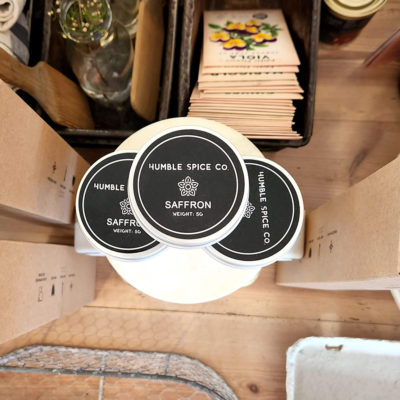Are you passionate about sustainable eating? Embark on a culinary journey with Farm-to-Table, where you can reduce your carbon footprint while savoring delicious dishes.
Embrace sustainable practices and savor the flavors of locally sourced ingredients. Discover the unique taste of saffron in farm-to-table cooking.
Join us on this sustainable adventure and indulge in eco-friendly meals that nourish both your body and the planet.
The Farm-to-Table Movement
If you’re passionate about locally sourced ingredients and supporting local farmers, the Farm-to-Table Movement is for you.
This movement is all about connecting people with the source of their food, promoting sustainability and supporting the local community.
By choosing to dine at farm-to-table restaurants or purchasing ingredients from local farmers’ markets, you can directly contribute to the growth of this movement.
The farm-to-table philosophy emphasizes freshness, seasonality, and knowing where your food comes from.
It encourages consumers to be aware of the environmental impact of their food choices and supports small-scale, sustainable farming practices.
Reducing Your Carbon Footprint
To further contribute to the sustainability of the farm-to-table movement, you can actively reduce your carbon footprint by making conscious choices in your food consumption.
One way to do this is by opting for local and seasonal produce. By choosing fruits and vegetables that are grown locally, you’re reducing the carbon emissions associated with long-distance transportation. Additionally, eating seasonal produce reduces the need for energy-intensive greenhouse cultivation or long-term storage.
Another way to reduce your carbon footprint is by consuming less meat and dairy products. Livestock farming is a significant contributor to greenhouse gas emissions. By incorporating more plant-based meals into your diet, you’re helping to mitigate climate change.
Embracing Sustainable Culinary Practices
By adopting sustainable culinary practices, you can make a positive impact on the environment and support local farmers.
One way to embrace sustainability is by sourcing your ingredients locally. This reduces the carbon footprint associated with transportation and supports local economies.
Additionally, choosing organic and seasonal produce not only ensures that you’re consuming fresh and nutritious food, but also minimizes the use of harmful pesticides and promotes biodiversity.
Another aspect of sustainable culinary practices is reducing food waste. By planning your meals, using leftovers creatively, and composting food scraps, you can significantly reduce the amount of waste that ends up in landfills.
Finally, consider incorporating plant-based meals into your diet. This not only promotes personal health but also reduces the environmental impact associated with meat production.
Embracing sustainable culinary practices is a small step that can make a big difference in creating a more sustainable future.
Sourcing Local Ingredients for Eco-Friendly Dishes
Start by seeking out local farmers and markets to source fresh, eco-friendly ingredients for your dishes. By doing this, you not only support local businesses, but also reduce the carbon footprint associated with long-distance transportation.
Local farmers often grow their produce using sustainable farming practices, such as organic methods or crop rotation, which promote soil health and biodiversity. When you buy directly from them, you can inquire about their farming practices and ensure that the ingredients you use are free from harmful pesticides or genetically modified organisms (GMOs).
In addition, shopping at farmers markets allows you to connect with the people who grow your food, fostering a sense of community and transparency.
Exploring the Flavor of Saffron in Farm-to-Table Cooking
Have you ever wondered how to incorporate the unique flavor of saffron into your farm-to-table cooking?
Saffron, known as the ‘golden spice,’ adds a subtle and exotic taste to your dishes, making them stand out in both flavor and appearance.
As a farm-to-table enthusiast, you can source this precious ingredient from local farms or even grow it in your own backyard.
Saffron is commonly used in Mediterranean and Middle Eastern cuisines, where it adds a vibrant yellow color and a floral, slightly bitter taste.
Whether you choose to use saffron in risottos, stews, or desserts, it will elevate your farm-fresh ingredients to a whole new level.
Experiment with this exquisite spice and discover the endless possibilities it brings to your farm-to-table cooking.
Next time you sit down for a meal, consider the farm-to-table approach. By supporting local farmers and using sustainable practices, you can reduce your carbon footprint and embrace eco-friendly culinary practices.
Sourcing local ingredients not only benefits the environment but also adds a unique and flavorful touch to your dishes. And don’t forget to explore the rich and vibrant flavor of saffron, a perfect addition to any farm-to-table recipe.
Join the sustainable culinary journey today!






